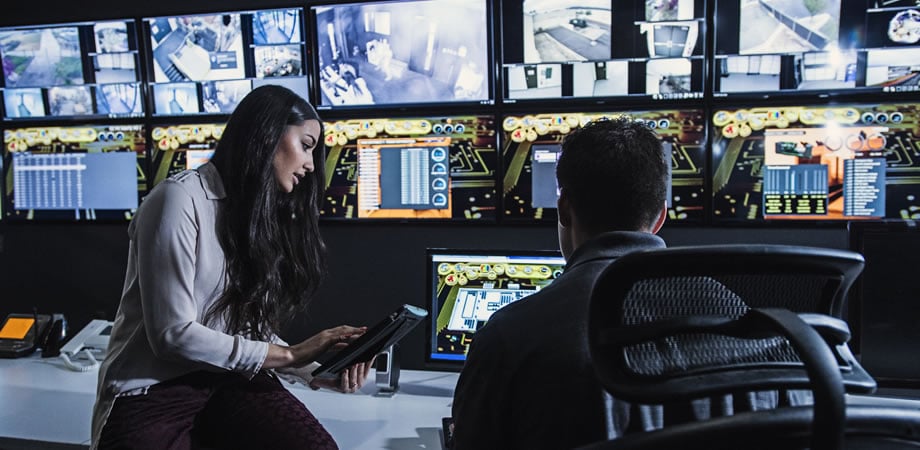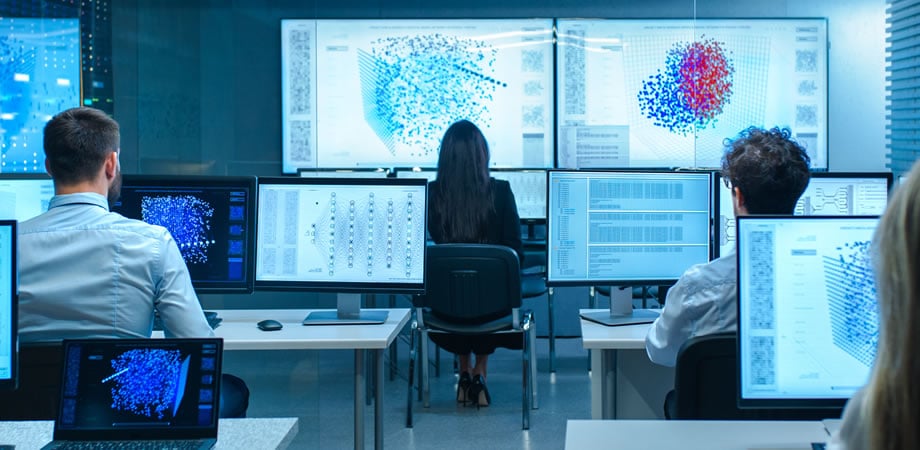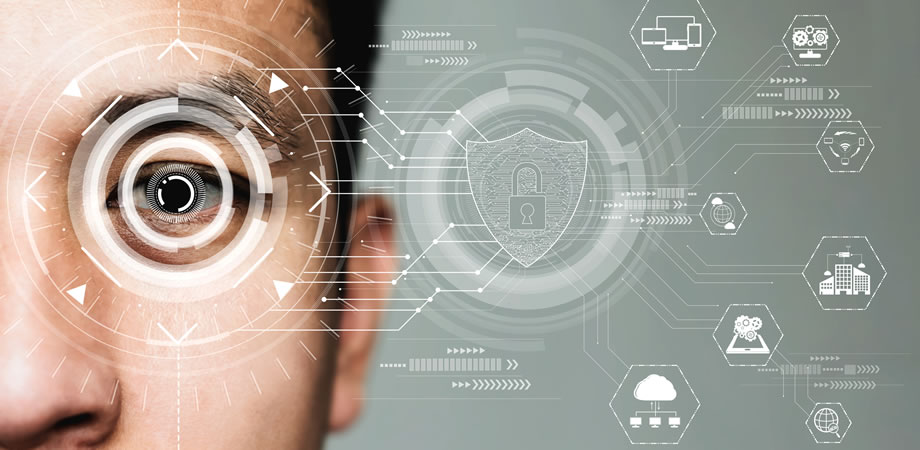2020 will go down in the history books as the air transport industry’s most turbulent year to date, with massive fluxes in passenger volumes globally due to the COVID-19 pandemic. Runways emulating plane graveyards served as a visceral reminder of the vulnerable economics of the air transport industry.
Emerging from government-imposed travel bans and nationwide lockdowns during the first half of the year was not enough to prompt travelers to return to the skies en masse. After showing some positive signs over the northern hemisphere summer months, global passenger traffic at the end of December 2020 slumped back down to 44% year-on-year (YoY) from 2019, according to SITA data. Regaining passenger confidence has become a critical factor for airlines to weather the ongoing economic storm.
Reasons to be hopeful
No territory is left unscathed by the impact of COVID-19 and many western countries are buckling into their second wave response protocols with lockdowns reinstated in the UK, Europe, and parts of the US, much to the fatigue of struggling businesses and citizens.
Fringe and emerging technologies that were side-lined during the previous decade of industry growth are now being examined with fervent scrutiny to evaluate their efficacy in solving crucial COVID-19 challenges.
For example, Health ETAs (Electronic Travel Authority) where electronic verification of a passenger’s health status is required upon entry to a country look set to be commonplace by next year. Their usage will become standardized as new COVID-19 vaccines are made available in 2021.
Accelerated digitization
Increasing passenger safety, boosting passenger confidence, and making airport and airline operations significantly more efficient, adaptable, and intelligent is the new blueprint for survival, and eventually growth. Significant steps in these areas have already been taken.
Despite being synonymous with stalled economies and canceled events, 2020 was a year of accelerated technology adoption across the air transport industry. We know this because we work closely with customers throughout the industry globally who are actively pursuing new technologies to adopt.
From head-mounted thermal scanning devices to technology-supported social distancing measures, new technologies have seeped into our airports and changed the passenger experience. That pace of innovation adoption sets a scene for rapid industry transformation over the next few years and will force a historically slow-moving industry into action.
The pandemic has prompted a new focus on trust. The industry must regain the trust of passengers while airport and airline workers must trust the measures taken and the environments they are working in are sufficient to keep them safe.
David Lavorel, SITA AT AIRPORTS AND BORDERS, plots a new course for aviation’s recovery in 2021 and predicts a smarter, safer, and more sustainable travel industry fit for people and planet. Here are the six technology trends set to underpin this metamorphosis.
1. Advanced self service and biometrics

The digitally optimized traveler experience makes use of facial recognition and touchless technologies, embedded in various self-service devices. Automation and biometrics will become the norm rather than the exception at leading airports globally in the next few years. SITA has already implemented Smart Path self-service biometric and mobile technology and automated the outbound passenger journey at several airports, including Beijing and Miami.
These deliver a ‘walk-through’ airport experience, where passengers can simply use their face as their boarding pass and walk from the taxi to the plane in a fluid and seamless fashion. Improved processing efficiency means less time in line and more social distancing for all passengers. A key benefit during the COVID-19 era is that the process removes the need to touch any airport equipment, reducing the risk of infection significantly. Once airborne, passengers are increasingly being offered services via Wi-Fi or 4G networks to avoid any non-personal touchpoints (such as seat-back inflight entertainment screens) and respect social distancing – boosting confidence onboard as a result.
As well as biometrics and automation for improving passenger processing, there is a huge opportunity to increase efficiency and safety for airport and airline crew using technology like SITA Smart Path. In November 2020, SITA announced a trial with Etihad to use facial recognition technology to identify and authenticate crew members, allowing them to complete check-in procedures and mandatory pre-flight safety and security questions digitally via their own mobile devices. The new initiative has replaced a kiosk-based check-in process which required crew to use their staff identity cards as a form of authentication.
2. SDN innovation and evolving airport operations in response to COVID-19

Passenger flow management technologies such as SITA Airport Management provide real-time passenger monitoring and actionable insights, for airports to understand and manage passenger movement throughout the airport. It will become a necessity to pro-actively manage crowd density and social distancing during daily operations, as well as longer-term planning.
Utilizing technology, like SITA's Information Display System, airports can send passengers personalized mobile messages. This added level of communication places passengers at ease throughout their entire airport journey.
Innovation in software defined networks (SDN) is also enabling more resilient and agile airport operations that can respond to the changing demands of travel during and post-pandemic. For example, SITA’s SDN portfolio allows multiple airlines, ground handlers, and other tenants to access the same virtualized infrastructure in the cloud, delivering more scalable and agile connectivity. Leveraging Orange Business Services’ Flexible SD-WAN portfolio, this drives greater cost efficiencies and supports the airline industry’s drive to migrate applications to the cloud.
3. Internet of Things, Artificial Intelligence and Machine Learning

The Internet of Things (IoT) has held great promise for some time but the convergence of 5G, maturing Artificial Intelligence (AI) programs, and the ubiquity of sensors embedded into cheaper hardware is bringing this vision to life. The IoT creates a network of data-producing devices and assets that converse and increase efficiency across the airport. Examples of technologies that harness IoT and AI to solve business problems are robotics and autonomous vehicles, Computer Vision, language, virtual agents, and Machine Learning.
Machine Learning algorithms detect patterns and learn how to make predictions and recommendations by processing data and experiences, rather than by receiving explicit programming instructions. Already we are seeing increased use of real-time data to intelligently handle turbulence and shifting weather patterns. SITA recently announced a solution with eWAS Pilot that delivers both forecasts and satellite-based observation data, enabling crews to avoid the avoidable and create more economic, intelligent, and flexible flight plans.
While helping to address immediate needs like sanitization, social distancing, and the automation of customer support processes, the combination of these technologies potentially signposts a Fourth Industrial Revolution, where, beyond airports, the physical world around us becomes connected and intelligent. AI algorithms will be key to efficiency, with sophisticated AI becoming the secret sauce for airports. Airports will use visually-enabled analysis supported by AI-based recommendations to bring real-time 3D simulations of operations to life for all stakeholders, improving operational efficiency, and enhancing the passenger experience.
4. Development of a Digital Identity for air travel

In the coming years, we expect that the development of a digital identity will replace the traditional passport. One approach is a Digital Travel Credential (DTC), currently being explored and progressed by key industry bodies like ICAO.
Another potential solution is self-sovereign identity, a form of digital identity giving travelers control over how their personal data is shared and used. It adds a layer of security and flexibility, allowing the identity holder to reveal only the data required for any given transaction or interaction.
The benefits of using self-sovereign identity include lower financial transaction costs, protecting people’s personal information, limiting opportunity for cybercrime, and simplifying identity challenges in various fields, including travel, healthcare, banking, IoT, and voter fraud.
5. Vaccination Visas, Health ETAs, and Advanced Passenger Processing

Health ETAs allow governments to receive the information they need to help reduce the risk of infection from travel and tourism. Travelers are required to provide information on their health status – potentially including PCR test results that indicate the presence of COVID-19 antigens – and are informed of that assessment’s outcome in advance of travel. This will give travelers the confidence before they start that they will be allowed to complete their journey.
Advance Passenger Processing (APP) brings the ability to assess the risk, including health risks, and allow or deny travel at check-in. When coupled with the implementation of a Health ETA service, it enables real-time checks to be performed to confirm that each traveler has completed the required health checks and is eligible to travel.
6. Blockchain for aviation industry-wide savings
It is almost as though the blockchain was invented for the air transport industry. Blockchain is about sharing information safely among different industry players. It is about providing one truth at a given point, that can be used to facilitate workflow and the exchange of data. This trusted network is tailor-made to address some key challenges of COVID-19 without compromising passenger experience or data privacy.
PwC estimates that the use of blockchain could increase aerospace industry revenue by as much as 4% or $40 billion while cutting Maintenance Repair and Overhaul (MRO) costs globally by around 5% or $3.5 billion. Savings will be derived from secure document storage, ensuring confidentiality and data privacy, improved insights on repair time and inventory, automated workflows, and more efficient record reconciliation.
In 2020 Blockchain was successfully used in a SITA Blockchain Alliance MRO Proof of Concept to record and track two separate strands of information for each aircraft part: a digital thread and a digital passport. The digital thread provided the real-time status, chain of custody, and back-to-birth track and trace of the aircraft part over time. The digital passport – like a human passport – provided the indisputable identity of a part and contains other vital data such as certification of airworthiness to prove ownership.
From a passenger perspective, customs processes are another area where blockchain can solve challenges. Airports, airlines, and governments can share baggage content information to pre-clear bags at arrival, hence avoiding the need to recheck bags in transit. Improving efficiency in this department, and further reducing the chances of baggage mishandling on arrival, is good news for passengers. COVID-19 presents a minefield of data sharing challenges between the dozens of organizations required to collaborate during a single passenger journey. Being able to share critical information safely and instantly will result in easier, smarter, and safer air travel for all, encouraging a return to the skies and strengthening the resilience of the air transport industry for years to come.





 Share
Share



0 Comments